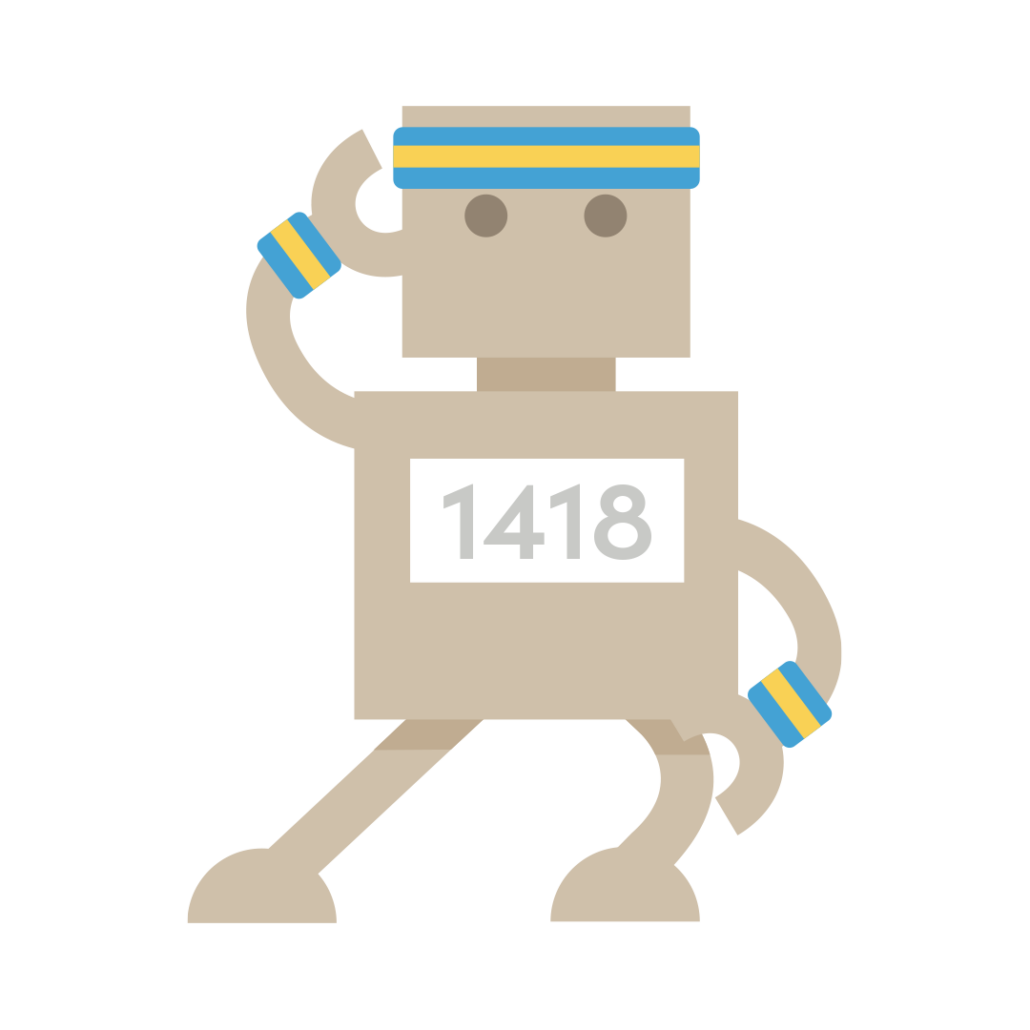Following our exploration of high-converting email content, this second part of our blog series delves into the specific world of peer-to-peer (P2P) fundraising communications. These journeys are the most complex to build, combining marketing automation for strategic engagement with peer-to-peer fundraising platform-triggered emails for functional notifications. They are also the most critical. You have a limited amount of time to engage, inspire and train participants to get involved. Good journeys are not just crucial for income today, but also for future retention and growth.
Journeys for P2P leads, participants and donors should be segmented and highly influenced by both timing and performance. The type of community or event fundraising being undertaken can also play a part when crafting the experience for your supporters (especially for virtual challenges). To deliver a quality engagement requires you to be in control of as many of the triggers and timings as possible – otherwise you run into a horrible situation where a supporter receives competing comms in the same day, ostensibly from the same source.
[Note: It’s also necessary for you to edit the communications your supporters receive from your P2P platform. The sender, tone, look and feel and messaging should align with, and enhance, the participant’s overall interaction, rather than distracting from it by confusing them.]
Now for quick thoughts about the impact of the type of P2P proposition on your email journey.
Third-party physical challenge events (for example, a marathon)
These events often involve registration systems and restrictions about which P2P platforms your supporters can use. These factors complicate lead nurture, tracking of marketing effectiveness and data integration.

Assuming all are smoothed, you may want to consider a longer-than-average lead time, and extra coaching for both the challenge and higher fundraising targets. Your comms plan and supporter engagement will require sustained engagement through training tips, fundraising advice, tools and tips, recognition of milestones and cheerleading. The longer lead time provides an opportunity to share more details of the impact of the event income. A key consideration for these events is planning touchpoints to maintain momentum.
DIY community fundraising
When supporters choose their own challenge, they are likely to each need different flavours of support. Aim to capture an event date when they register so you can shape a relevant journey. Focus on simple tips, an introduction to your P2P platform or online fundraising and a sense of community.
Should you have incentives, you can also promote them alongside actionable fundraising coaching. Provide them with inspiration, practical resources and flexible templates they can adapt. The key is empowering their creativity, recognising their generous support and ensuring they have the relevant tools to succeed.
Your own challenges
Whether virtual, physical or (as is more and more often the case now), hybrid, the performance of your events requires clear information flow, community building, coaching / training, excitement and motivation.
Virtual challenges can run for quite extended periods, often a month. To maintain engagement and drive fundraising, they benefit from regular updates about the achievements of the event community and timely progress recognition.
Peer appeals
We’re not going to discuss these in much detail, save to say that appeals via platforms such as GoFundMe bring their own set of communication needs. However often they are set up by individuals to leverage crowd funding, rather than established by organisations as community challenges.
These campaigns may require rapid response capacity to engage with donors alongside careful guidance about storytelling and network activation.
A quick note on consent
Ensure you declare the type of communication you plan to offer your participants, such as event information, fitness tips, training plans or fundraising coaching. This gives your supporters a sense of what to expect, lifts marketing opt-in rates and quantifies a value exchange. It also provides reassurance that they will be supported while they do the best they can for your cause.
The moment you request permission to keep in touch in a registration process is a great place to introduce the individual or team from whom your comms will be sent.

Platforms
Many P2P platforms offer, at a minimum, transactional emails triggered when a participant receives a donation, a new team mate joins, or they need to reset their password. These transactional emails are almost always best sent from the platform itself. As noted above, even if limited in formatting and design scope, do take the time to personalise the email copy / theme for your event.
This being said, we have found that welcome, nurture and in-event supporter experiences always perform best when operated via a dedicated and capable marketing automation platform. A blend of time-based and achievement triggers plus careful segmentation generates class-leading results.
Platforms such as Funraisin and Raisely are now building some of this capability into their tech – great for charities that don’t have access to a marketing automation platform. However, for the moment, they aren’t as optimised, or fully featured, as a commercial marketing automation platform such as Ortto or Campaign Monitor.
Using an external marketing automation platform means you are taking advantage of tech built specifically for that purpose, used at scale, and with the benefit of continued development and energy expended on deliverability plus the admin experience.
The only hiccup in this utopia is the possible need to develop a data integration between your P2P and marketing automation platforms. For most common platforms this connection is often available ‘out of the box’. For less common ones, it necessitates some technical support.
Core journey elements
Your P2P participant’s experience starts from the moment they see an ad for an event or open a promo email inviting them to get involved. Optimising and coordinating every touchpoint of their journey takes time and focus. However, each step from the first to last offers an opportunity to either enrich and delight or confuse and turn off your supporter. While we’re sharing tips on emails here, it’s worth noting the importance of your ads, landing pages, registration and donation forms as well as your online fundraising pages. Each plays its own, important, part in the overall performance of your P2P proposition.
After years of working on some of the largest P2P events globally, we have honed a collection of optimised participant email experiences. The collected content embraces and coaches, steers and rewards participants from their first point of contact all the way to their post-event thank you, including conversion to their next best action.
Here are some tips for the highlight moments within our journey:
- Confirmation and welcome campaign
- Real-time welcome, introduction to contact and immediate next step
- Introduce and link to training and fundraising resources
- Share community connection opportunities such as access to a private Facebook group or WhatsApp
- Trigger and reward early fundraising
- Experience and skill development
- Regular milestone-based encouragement
- Training support (where relevant) and check ins
- Fundraising coaching, tips from other participants
- Community updates and recognition of excellence
- Promotion of matched giving, impact or corporate partner activations
- Event countdown and build up
- 48 hours before event
- Final preparation guidance and support / attendance detail
- Good luck and community excitement
- Event
- Launch moment
- Good luck comms
- On-the-day support (if relevant)
- Updates and encouragement
- Mid-event update and cheer team to help push for the line
- Finish line moment to celebrate achievement
- Post-event nurture
- Immediate congratulations
- Drive to share experience with last sponsors
- Pay in offline fundraising
- Report on impact
- Survey community to gain insight
- Introduce future opportunities and parallel propositions
- Develop and launch retention pathway
P2P email tips
A few practical implementation tips for you too. They build on the content and technical tips shared in the other parts of this series of blog posts. We’ll repeat a couple of the most important ones in case you missed them.

- Optimise for mobile since most P2P participants manage their fundraising on mobile devices. Ensure your emails are easy to read on small screens, include clear, tappable calls-to-action and offer one-click sharing (fewer clicks, and easier actions, significantly impact activation)
- Craft your journey using time-based triggers such as days since registration, time until the event, moment within the event experience.
- Shape content based on fundraising progress, engagement levels and previous participation history as well as role (team captain, team member, organisation member, corporate partner etc.)
- When directing participants to their dashboard, resources or fundraising page, always use a link with a token that automatically logs them in to reduce friction for them
- Build community connection through ambassador and participant spotlights, team updates, promotion of leaderboard highlights, shared milestone celebrations and cross-publishing content between email, P2P pages and social media platforms
- Create a consistent footer for all event communications, with icons and links to take quick actions: visit their page; share on Facebook; and find fundraising resources
- Include customisable image assets which participants can copy straight from their email, to post as stories or images on social
- As far as possible, focus your P2P communications on a single action (it might be presented using different buttons or labels within an email) using one-click links that automatically create social posts, pre-populated emails triggered using a mailto link, code or copy their personal fundraising page URL for use on messenger apps
[An exception to the single action tip is the structure of a welcome email. We segment the primary call to action based upon participant status (have they started fundraising, are they a returner or VIP, are they a team captain?). This email often has one of the highest open rates, meaning it is worth also promoting a graphic of three key actions – for example, donate; update your fundraising page; and share your fundraising page.]
And a final note about some key metrics we use to track the impact of our supporter journeys. It is vitally important to use real time data to iterate, amend and improve your default journeys. We recommend daily review of metrics such as:
- Fundraising activation rate
- Average raised per participant
- Email engagement rates
- Social sharing frequency
- Participant acquisition rate
- Event participant and income performance
The next parts of this email-focused blog series cover advanced marketing automation and the technical foundations for great email campaigns. If you have any questions about P2P journeys or would like a copy of our PDF guide to optimising your participant experience, get in touch!
